Related Research Articles

William Murdoch was a Scottish chemist, inventor, and mechanical engineer.

Wagonways, also known as horse-drawn railways and horse-drawn railroad consisted of the horses, equipment and tracks used for hauling wagons, which preceded steam-powered railways. The terms plateway, tramway, dramway, were used. The advantage of wagonways was that far bigger loads could be transported with the same power.

Continuous track is a system of vehicle propulsion used in tracked vehicles, running on a continuous band of treads or track plates driven by two or more wheels. The large surface area of the tracks distributes the weight of the vehicle better than steel or rubber tyres on an equivalent vehicle, enabling continuous tracked vehicles to traverse soft ground with less likelihood of becoming stuck due to sinking.

A differential is a gear train with three drive shafts that has the property that the rotational speed of one shaft is the average of the speeds of the others. A common use of differentials is in motor vehicles, to allow the wheels at each end of a drive axle to rotate at different speeds while cornering. Other uses include clocks and analog computers.
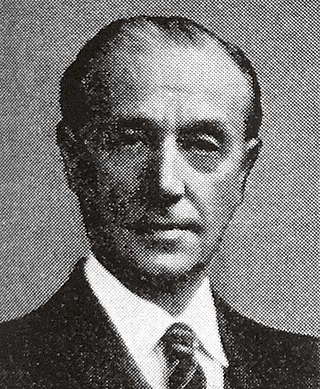
Oliver Vaughan Snell Bulleid CBE was a British railway and mechanical engineer best known as the Chief Mechanical Engineer (CME) of the Southern Railway between 1937 and the 1948 nationalisation, developing many well-known locomotives.

A mechanical calculator, or calculating machine, is a mechanical device used to perform the basic operations of arithmetic automatically, or (historically) a simulation such as an analog computer or a slide rule. Most mechanical calculators were comparable in size to small desktop computers and have been rendered obsolete by the advent of the electronic calculator and the digital computer.
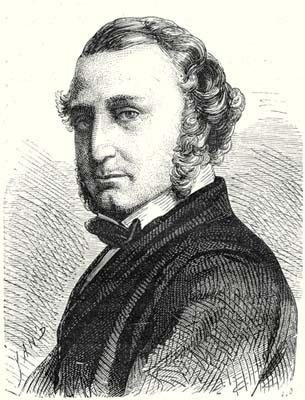
Thomas Russell Crampton, MICE, MIMechE was an English engineer born at Broadstairs, Kent, and trained on Brunel's Great Western Railway.
Birmingham is one of England's principal industrial centres and has a history of industrial and scientific innovation. It was once known as 'city of a thousand trades' and in 1791, Arthur Young described Birmingham as "the first manufacturing town in the world". Right up until the mid-19th century Birmingham was regarded as the prime industrial urban town in Britain and perhaps the world, the town's rivals were more specific in their trade bases. Mills and foundries across the world were helped along by the advances in steam power and engineering that were taking place in the city. The town offered a vast array of industries and was the world's leading manufacturer of metal ware, although this was by no means the only trade flourishing in the town.

Novelty was an early steam locomotive built by John Ericsson and John Braithwaite to take part in the Rainhill Trials in 1829.
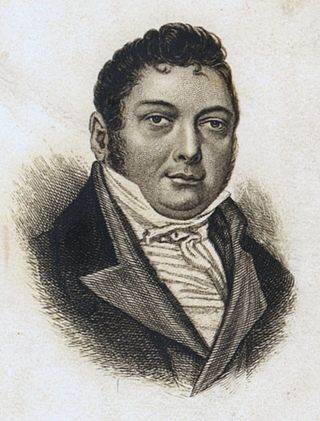
Matthew Murray was an English steam engine and machine tool manufacturer, who designed and built the first commercially viable steam locomotive, the twin cylinder Salamanca in 1812. He was an innovative designer in many fields, including steam engines, machine tools and machinery for the textile industry.
William Stroudley was an English railway engineer, and was one of the most famous steam locomotive engineers of the nineteenth century, working principally for the London, Brighton and South Coast Railway (LB&SCR). He designed some of the most famous and longest-lived steam locomotives of his era, several of which have been preserved.
B. Hick and Sons, subsequently Hick, Hargreaves & Co, was a British engineering company based at the Soho Ironworks in Bolton, England. Benjamin Hick, a partner in Rothwell, Hick and Rothwell, later Rothwell, Hick & Co., set up the company in partnership with two of his sons, John (1815–1894) and Benjamin (1818–1845) in 1833.
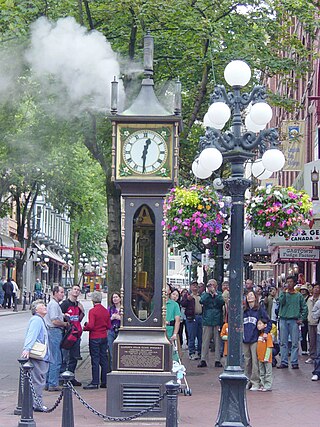
A steam clock is a clock which is fully or partially powered by a steam engine. Only a few functioning steam clocks exist, most designed and built by Canadian horologist Raymond Saunders for display in urban public spaces. Steam clocks built by Saunders are located in Otaru, Japan; Indianapolis, United States; and the Canadian cities of Vancouver, Whistler and Port Coquitlam, all in British Columbia. Steam clocks by other makers are installed in St Helier, Jersey and at the Chelsea Farmers' Market in London, England.

A steam bus is a bus powered by a steam engine. Early steam-powered vehicles designed for carrying passengers were more usually known as steam carriages, although this term was sometimes used to describe other early experimental vehicles too.

The Daimler Motorized Carriage was the first car produced by German engineers Gottlieb Daimler and Wilhelm Maybach, who founded Daimler Motoren Gesellschaft (DMG). The first car was sold in 1892.

The London Steam Carriage was an early steam-powered road vehicle constructed by Richard Trevithick in 1803 and the world's first self-propelled passenger-carrying vehicle. Cugnot had built a steam vehicle 30 years previously, but that had been a slow-moving artillery tractor, not built to carry passengers.

The history of steam road vehicles comprises the development of vehicles powered by a steam engine for use on land and independent of rails, whether for conventional road use, such as the steam car and steam waggon, or for agricultural or heavy haulage work, such as the traction engine.
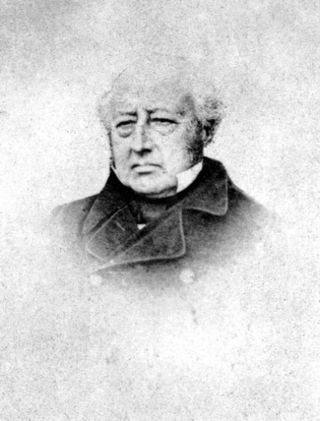
Edward Bury was an English locomotive manufacturer. Born in Salford, Lancashire, he was the son of a timber merchant and was educated at Chester.

Paul Rapsey Hodge was an English-American inventor and mechanical engineer. He invented technological improvements used by railroad companies. He also invented a device that ground wheat and other grains into flour that could then be used by bakers, as well as a machine that turned vegetable pulp into paper that could be used by printers. His innovations were useful to many industries. He was a writer of technical manuals in both the United States and England.

The Grenville steam carriage was developed in 1875 by Robert Neville-Grenville, assisted by George Jackson Churchward. It was built around a boiler from a Merryweather & Sons fire engine, and could carry seven people including the driver, steersman and stoker.
References
- ↑ "The Inshaw Family". Aston Brook through Aston Manor. Archived from the original on 14 October 2010. Retrieved 17 September 2010.
- 1 2 Hogan, Jill. "The Inshaw Steam Carriage". Aston Brook through Aston Manor. Archived from the original on 9 September 2010. Retrieved 17 September 2010.